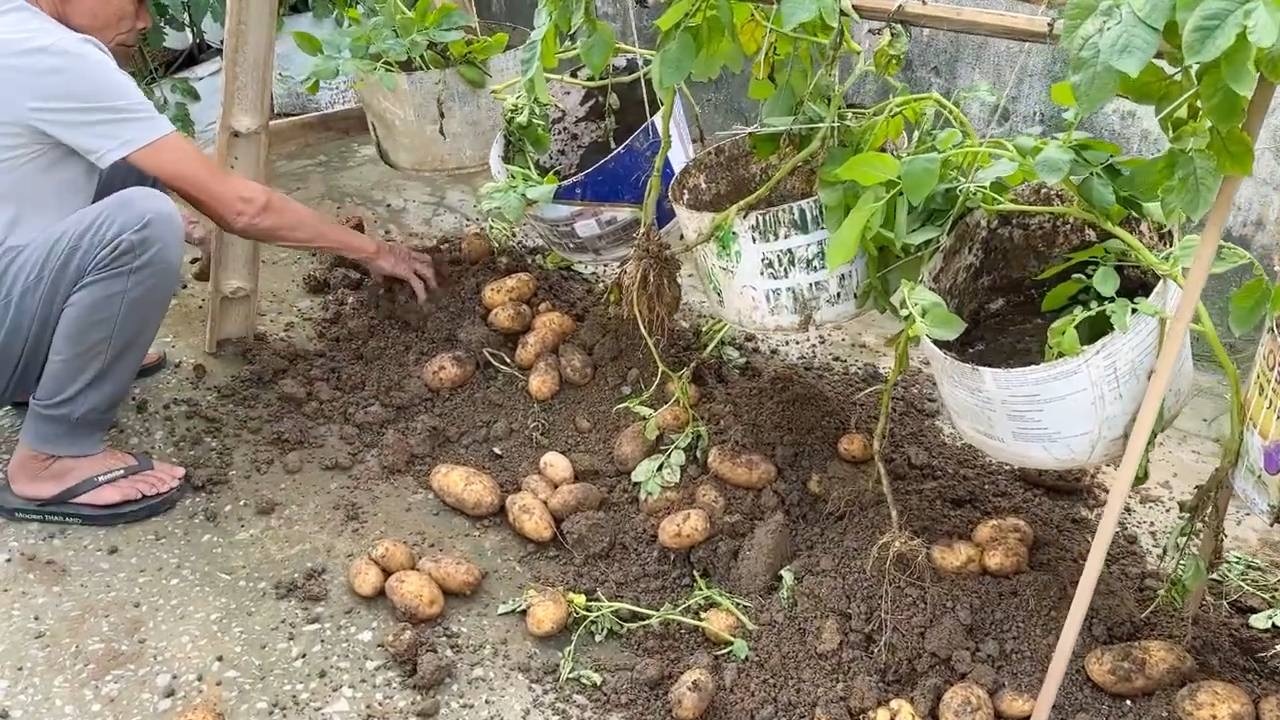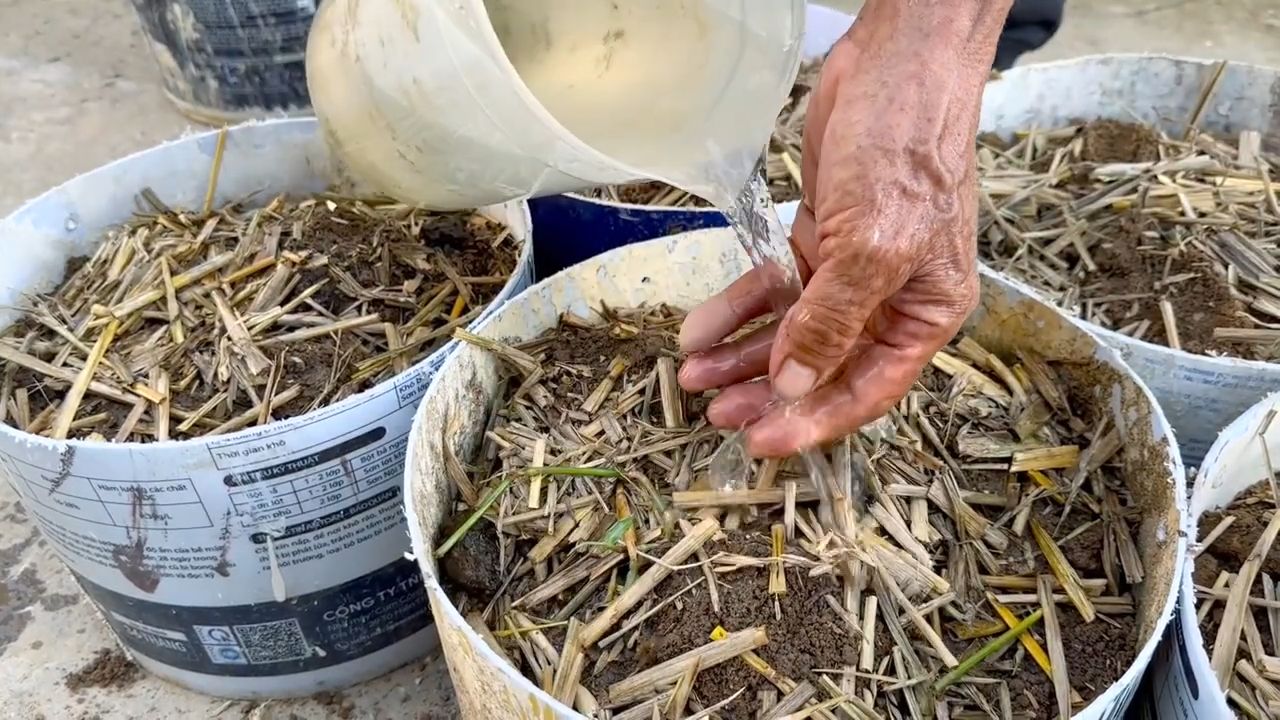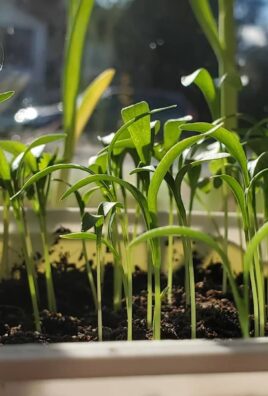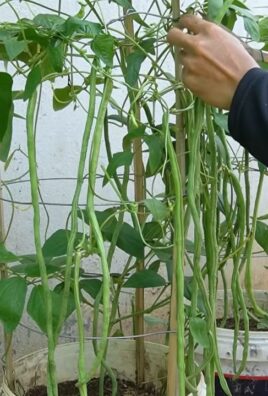Backyard celery growing success is within your reach, even if you think you have a brown thumb! Have you ever dreamed of snipping fresh, crisp celery stalks straight from your own garden for a healthy snack or to add that perfect crunch to your soups and salads? I know I have! For centuries, celery has been cultivated, not just for its culinary uses, but also for its medicinal properties. Ancient Romans even used it as a celebratory garland!
But let’s be honest, growing celery can sometimes feel like a frustrating endeavor. It’s notorious for being a bit finicky, often resulting in thin, bitter stalks that are nothing like the plump, juicy celery you find at the grocery store. That’s where these DIY tricks and hacks come in! I’m going to share some simple, yet effective techniques that will dramatically improve your chances of backyard celery growing success.
Imagine the satisfaction of harvesting your own vibrant, flavorful celery, knowing exactly where it came from and how it was grown. No more relying on store-bought celery that may have traveled miles and lost its freshness. With these easy-to-follow tips, you’ll be well on your way to enjoying a bountiful celery harvest right in your own backyard. So, grab your gardening gloves, and let’s get started!

Growing Celery in Your Backyard: A Beginner’s Guide to Crunchy Success
Hey there, fellow gardening enthusiasts! I’m so excited to share my experience with growing celery right in my backyard. It’s surprisingly easier than you might think, and the taste of homegrown celery is just unbeatable – so much fresher and more flavorful than anything you can buy at the store. Plus, it’s incredibly rewarding to harvest something you’ve nurtured from a tiny seedling. So, grab your gardening gloves, and let’s dive into the wonderful world of homegrown celery!
Choosing the Right Celery Variety
Before we get our hands dirty, let’s talk about celery varieties. Not all celery is created equal, and choosing the right one for your climate and preferences is crucial. Here are a few popular options:
* ‘Utah Tall Green’: This is a classic, reliable variety known for its crisp stalks and robust flavor. It’s a great all-around choice for beginners.
* ‘Golden Self-Blanching’: If you prefer a milder flavor and lighter-colored stalks, this variety is an excellent option. It’s also known for being relatively easy to grow.
* ‘Giant Red’: For something a little different, try ‘Giant Red’ celery. It has beautiful reddish-purple stalks and a slightly sweeter flavor.
* ‘Pascal’: Another popular green variety, ‘Pascal’ is known for its disease resistance and good flavor.
I personally started with ‘Utah Tall Green’ because it’s widely available and known for its reliability. But don’t be afraid to experiment and find the variety that suits your taste!
Starting Celery from Seed (or Seedlings!)
Celery can be a bit tricky to start from seed, as it requires a long growing season and specific conditions. But don’t let that scare you! I’ll walk you through it. Alternatively, you can purchase seedlings from your local garden center, which will give you a head start.
Starting from Seed (The Patient Gardener’s Route)
1. Timing is Key: Celery needs a long growing season, so you’ll need to start your seeds indoors about 10-12 weeks before the last expected frost. I usually start mine in late February or early March.
2. Prepare Your Seed Starting Mix: Use a seed starting mix that’s light and well-draining. I like to use a mix of peat moss, vermiculite, and perlite.
3. Sow the Seeds: Celery seeds are tiny, so be careful not to sow them too thickly. Sprinkle them lightly on the surface of the soil and gently press them down. Don’t cover them with soil, as they need light to germinate.
4. Provide Light and Warmth: Celery seeds need warmth and light to germinate. Place your seed trays in a warm location (around 70-75°F) and provide them with plenty of light. A grow light is ideal, but a sunny windowsill can also work.
5. Keep the Soil Moist: Keep the soil consistently moist, but not soggy. I like to use a spray bottle to mist the soil regularly.
6. Be Patient: Celery seeds can take up to 2-3 weeks to germinate, so don’t get discouraged if you don’t see anything right away.
7. Thin the Seedlings: Once the seedlings have developed a few true leaves, thin them out so that they’re spaced about 2 inches apart.
8. Harden Off the Seedlings: Before transplanting your seedlings outdoors, you’ll need to harden them off. This means gradually exposing them to outdoor conditions over a period of about a week. Start by placing them in a sheltered location for a few hours each day, gradually increasing the amount of time they spend outdoors.
Starting with Seedlings (The Easier Option)
1. Choose Healthy Seedlings: Look for seedlings that are about 4-6 inches tall and have healthy green leaves. Avoid seedlings that are yellowed, wilted, or have any signs of disease.
2. Prepare the Seedlings: Gently remove the seedlings from their containers and loosen the roots.
Preparing the Garden Bed
Celery needs rich, well-drained soil that’s high in organic matter. Here’s how I prepare my garden bed:
1. Choose a Sunny Location: Celery needs at least 6 hours of sunlight per day.
2. Amend the Soil: Dig in plenty of compost or well-rotted manure to improve the soil’s fertility and drainage. I usually add a few inches of compost to my garden bed.
3. Check the Soil pH: Celery prefers a soil pH of 6.0-6.8. You can test your soil pH with a soil testing kit. If your soil is too acidic, you can add lime to raise the pH. If it’s too alkaline, you can add sulfur to lower the pH.
4. Create Raised Beds (Optional): Raised beds can improve drainage and make it easier to manage the soil.
Transplanting Your Celery
Now for the exciting part – getting those celery plants into the ground!
1. Timing is Everything: Transplant your celery seedlings outdoors after the last expected frost, when the soil has warmed up to at least 60°F.
2. Space the Plants Properly: Space the plants about 6-8 inches apart in rows that are 12-18 inches apart. This will give them enough room to grow and mature.
3. Dig the Holes: Dig holes that are slightly larger than the root balls of the seedlings.
4. Plant the Seedlings: Gently remove the seedlings from their containers and place them in the holes. Make sure the top of the root ball is level with the soil surface.
5. Fill in the Holes: Fill in the holes with soil and gently firm the soil around the plants.
6. Water Thoroughly: Water the plants thoroughly after transplanting.
Caring for Your Celery Plants
Celery needs consistent moisture and regular fertilization to thrive. Here’s how I care for my celery plants:
1. Water Regularly: Celery needs consistent moisture, especially during hot, dry weather. Water deeply and regularly, aiming to keep the soil consistently moist but not soggy. I usually water my celery plants every day or two, depending on the weather.
2. Fertilize Regularly: Celery is a heavy feeder, so it needs regular fertilization. I like to use a balanced organic fertilizer, such as fish emulsion or compost tea. Apply the fertilizer every 2-3 weeks, following the instructions on the package.
3. Weed Regularly: Keep the garden bed free of weeds, as weeds can compete with the celery plants for nutrients and water.
4. Mulch the Plants: Mulching the plants with straw or hay can help to retain moisture, suppress weeds, and regulate soil temperature.
5. Blanching (Optional): Blanching celery stalks makes them milder and more tender. To blanch celery, you can wrap the stalks with newspaper or cardboard about 2-3 weeks before harvest. Make sure to leave the tops of the plants exposed to sunlight. I personally don’t usually blanch my celery, as I prefer the stronger flavor of unblanched celery.
Dealing with Pests and Diseases
Celery can be susceptible to a few pests and diseases, but with proper care, you can usually prevent problems.
* Celery Leaf Tier: These caterpillars can damage the leaves of celery plants. Handpick them off the plants or use an organic insecticide, such as Bacillus thuringiensis (Bt).
* Aphids: These small insects can suck the sap from celery plants. Spray them off with a strong stream of water or use an insecticidal soap.
* Celery Blight: This fungal disease can cause brown spots on the leaves of celery plants. Prevent celery blight by providing good air circulation and avoiding overhead watering. If you see signs of celery blight, remove the affected leaves and spray the plants with a fungicide.
* Pink Rot: This fungal disease causes a pinkish rot at the base of the celery stalks. Prevent pink rot by providing good drainage and avoiding overwatering. If you see signs of pink rot, remove the affected plants and dispose of them properly.
I’ve found that regular inspection of my plants and prompt action when I see any signs of trouble is the best way to keep pests and diseases at bay.
Harvesting Your Celery
The moment we’ve all been waiting for! Harvesting your homegrown celery is incredibly satisfying.
1. Timing is Key: Celery is ready to harvest when the stalks are at least 6-8 inches long and the plant is about 12-18 inches tall.
2. Harvesting the Stalks: You can harvest individual stalks as needed, or you can harvest the entire plant at once. To harvest individual stalks, simply cut them off at the base of the plant with a sharp knife. To harvest the entire plant, cut it off at

Conclusion
So, there you have it! Mastering the art of backyard celery growing isn’t just about saving money or having fresher produce; it’s about connecting with nature, understanding the growing process, and enjoying the unparalleled satisfaction of harvesting something you nurtured from seed (or even a grocery store stalk!). This DIY trick, focusing on regrowing celery from its base, is a game-changer for anyone looking to add a touch of green to their lives, regardless of their gardening experience.
Why is this a must-try? Because it’s incredibly simple, cost-effective, and rewarding. You’re essentially recycling food waste and turning it into a vibrant, edible plant. It’s a fantastic project for kids, teaching them about sustainability and the magic of plant life. Plus, the taste of homegrown celery is noticeably superior to store-bought varieties – crisper, sweeter, and bursting with flavor.
But don’t stop there! Experiment with different varieties of celery. Try growing ‘Utah Tall’ for its classic flavor or ‘Golden Self-Blanching’ for a milder, sweeter taste. You can also explore different growing mediums. While water propagation is a great starting point, transplanting your celery into a pot with well-draining soil will encourage stronger growth and larger stalks. Consider adding organic fertilizer to boost nutrient levels and promote healthy development.
Another variation to consider is companion planting. Celery thrives alongside plants like onions, garlic, and tomatoes, which can help deter pests and improve overall growth. Conversely, avoid planting it near parsley or potatoes, as they can hinder its development.
Don’t be afraid to get creative with your celery harvest. Use it in soups, stews, salads, or as a healthy snack with your favorite dip. The possibilities are endless! You can even use the celery leaves, which are often discarded, to add flavor to broths and stocks.
We wholeheartedly encourage you to give this DIY celery growing trick a try. It’s a small investment of time and effort that yields a significant return in terms of fresh produce, gardening satisfaction, and a deeper appreciation for the natural world.
And most importantly, we want to hear about your experiences! Share your photos, tips, and challenges in the comments below. Let’s build a community of backyard celery growers and learn from each other. Did you try a different variety? Did you encounter any unexpected hurdles? What were your biggest successes? Your insights will help others on their celery-growing journey. Happy gardening!
Frequently Asked Questions (FAQ)
1. How long does it take to regrow celery from the base?
The initial regrowth phase, where you see new leaves sprouting from the base, typically takes about 1-2 weeks in water. However, to grow full-sized celery stalks, you’ll need to transplant the base into soil and allow it to mature for several months. The exact time will depend on factors like sunlight, soil quality, and the specific celery variety. Expect to harvest usable stalks within 75-100 days after transplanting.
2. What kind of water should I use for regrowing celery?
Tap water is generally fine for regrowing celery, but it’s best to let it sit out for 24 hours to allow chlorine to dissipate. Alternatively, you can use filtered water or rainwater. Avoid using distilled water, as it lacks the minerals that plants need for healthy growth. Change the water every 1-2 days to prevent bacterial growth and keep the base fresh.
3. How much sunlight does regrowing celery need?
Celery thrives in full sun, which means at least 6-8 hours of direct sunlight per day. However, if you live in a particularly hot climate, some afternoon shade can be beneficial to prevent the leaves from scorching. When starting the regrowth process in water, place the celery base in a bright, sunny windowsill. Once transplanted to soil, ensure it receives ample sunlight.
4. What kind of soil is best for growing celery?
Celery prefers rich, well-draining soil that is high in organic matter. Amend your garden soil with compost, aged manure, or other organic materials to improve its fertility and drainage. A slightly acidic soil pH of 6.0 to 6.8 is ideal. You can test your soil pH with a home testing kit or by sending a sample to your local agricultural extension office.
5. How often should I water celery plants?
Celery needs consistent moisture to thrive. Water deeply and regularly, especially during hot, dry weather. Aim to keep the soil consistently moist but not waterlogged. Check the soil moisture by sticking your finger about an inch deep. If it feels dry, it’s time to water. Mulching around the plants can help retain moisture and suppress weeds.
6. What are some common pests and diseases that affect celery?
Celery can be susceptible to pests like aphids, celery leaf tiers, and carrot rust flies. Diseases like early blight, late blight, and pink rot can also be problematic. Regularly inspect your plants for signs of pests or diseases. Use organic pest control methods like insecticidal soap or neem oil to control pests. Ensure good air circulation around the plants to prevent fungal diseases. Remove any infected leaves or plants promptly to prevent the spread of disease.
7. Can I grow celery indoors year-round?
Yes, you can grow celery indoors year-round, but you’ll need to provide it with adequate light and humidity. Place the plant near a sunny window or use grow lights to supplement natural light. Maintain a consistent temperature of 60-70°F (15-21°C). Increase humidity by misting the plant regularly or placing it on a tray filled with pebbles and water.
8. How do I blanch celery to make it milder?
Blanching celery involves excluding light from the stalks to reduce chlorophyll production, resulting in a milder, sweeter flavor. You can blanch celery by mounding soil around the stalks, wrapping them in newspaper, or using blanching collars. Start blanching about two weeks before harvest.
9. Can I use the celery leaves?
Absolutely! Celery leaves are packed with flavor and nutrients. Use them in salads, soups, stews, or as a garnish. You can also dry them and use them as a seasoning. Don’t discard the leaves – they’re a valuable part of the plant.
10. My celery stalks are thin and stringy. What am I doing wrong?
Thin and stringy celery stalks are often a sign of insufficient water or nutrients. Ensure you’re watering your plants deeply and regularly, especially during hot weather. Amend your soil with compost or fertilizer to provide the plants with the nutrients they need. Also, make sure your plants are getting enough sunlight.





Leave a Comment